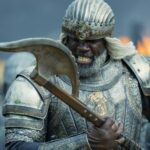Good news: Now that the last season of “Game of Thrones” is over, we finally have some answers.
Bad news: You won’t really understand them if you only watched the episodes.
While tuning in to Jeanie Finlay’s “Game of Thrones” documentary “The Last Watch,” fans finally understood how one of the biggest moments in the show’s history came to life as the cast learned that Arya Stark (Maisie Williams), the young girl who tossed aside her stitching lessons to become a Faceless assassin, kills the Night King.
During a final season script read, writer Bryan Cogman described the scene:
She vaults off a pile of dead wights, leaps at the Night King and she plunges the dagger up through the Night King’s armor. The Night King shatters.
It’s a magical and unexpected moment, only solidified by the cast’s hooting and hollering during the table read. But, up until this point, viewers had no idea how Arya actually jumped that high to posterize the icy Darth Maul.
Did she learn that move during assassin training? Had she been carbo-loadin’ with some wolf bread from Hot Pie? Did Winterfell secretly have its own trampoline?
The fact that Arya “vaults off a pile of dead wights” is completely new information, and continued a theme HBO seemingly followed throughout the final season: Tell, don’t show — disclose essential information not in the episodes, but afterward.
The post-episode footage ― in the form of “The Last Watch” documentary, “The Game Revealed” segments and “Inside the Episode” videos ― have almost become required viewing to explain things that don’t quite make sense, which isn’t always the most satisfying storytelling.
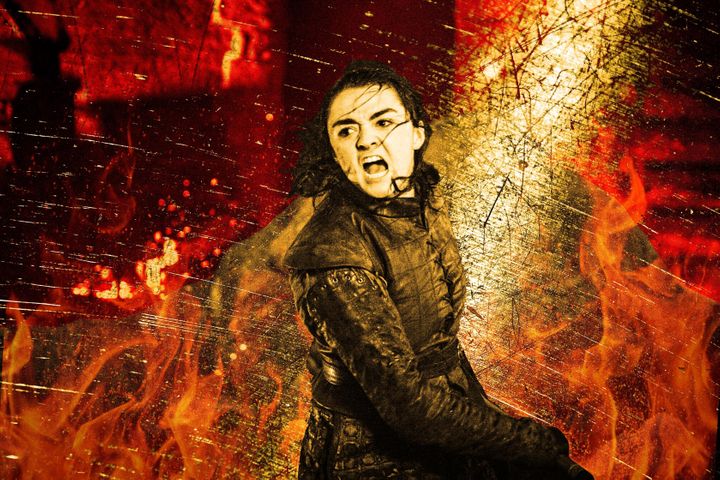
Historically, this post-episode footage, most of all HBO’s “Inside the Episode” videos, which feature behind-the-scenes interviews with showrunners David Benioff and Dan Weiss, were there to enhance the viewing experience of “Game of Thrones,” giving a closer look at what went into the episodes and a deeper understanding of the story.
For Season 8, the videos became indispensable in order to understand basic points of the show, which perhaps highlights the idea that the condensed final season and storylines didn’t necessarily work on their own.
Sure, maybe we didn’t absolutely need to know that Arya supposedly jumped off a pile of dead zombies during that iconic moment. Maybe. (Though the numerous articles about “Game of Thrones” finally revealing how Arya made the jump beg to differ.)
But just look at the “Inside the Episode” for Episode 3, “The Long Night.”
In that video, Weiss explained that Daenerys (Emilia Clarke) actually abandoned her war plan during the Battle of Winterfell after seeing the Dothraki decimated by the army of the dead.
“Jon is the person who wants to stick to the plan, but the Dothraki aren’t Jon’s. They’re not loyal to Jon. They’re loyal to Dany, and I think that Dany can’t bring herself to just watch them die, and so the plan starts to fall apart the second she gets on her dragon,” said the showrunner.
OK, what? Dany abandoning the battle plan is vital information that could perhaps explain why she and Jon (Kit Harington) looked so unorganized on their dragons. Why wasn’t this communicated in the episode?
Yes, Dany got on her dragon after watching the Dothraki attack, but there’s no indication that this wasn’t the plan all along. She just said, “The dead are already here.”
There’s another instance of explanation in the “Inside the Episode” for Episode 5, “The Bells.”
Here, Weiss explained that Dany’s decision to burn King’s Landing wasn’t premeditated, but it only happened because she “sees the Red Keep,” which is “the home that her family built when they first came over to this country 300 years ago.”
“It’s in that moment on the walls of King’s Landing where she’s looking at that symbol of everything that was taken from her when she makes the decision to make this personal,” he said.
In the scene that airs, you just see Dany get angrier and angrier as the Lannisters sound the surrender bells, making her controversial heel turn even more confusing because she’s already won the war.
The real catalyst behind Dany’s twist ― that the Red Keep was suddenly a trigger for her to inexplicably kill thousands of people ― isn’t clear until the after-episode video.
If “Game of Thrones” didn’t end with an abbreviated season — which neither HBO or the fans wanted — perhaps the “Inside the Episode” wouldn’t have to point out plot points that had been lost on the audience.
In earlier seasons, the videos were more of a complement to the story.
For instance, in Season 4, Episode 8, aka “The Mountain and the Viper,” the “Inside the Episode” was a much-needed follow-up for fans reeling from Prince Oberyn Martell’s (Pedro Pascal) failure to finish the job on the Mountain (Hafþór Björnsson), which led to a … mind-blowing turn of events.
You knew Oberyn’s intentions throughout that fight. He said it over and over. He wanted the Mountain to admit that Tywin (Charles Dance) gave the order for him to murder his sister, Elia Martell, during the sack of King’s Landing.
“For him, the Mountain, ironically, is the little fish. The big fish is Tywin. He really wants to prove that Tywin was behind all this,” Benioff said in that edition of “Inside the Episode.”
Even though you already knew this about the fight, Benioff’s commentary further solidifies why Oberyn acted the way he did when the Mountain was down (as frustrating as it may be), and why his end was so … crushing.
Now that you really need the “Inside the Episode” videos to make sense of what’s going on, their shortcomings are amplified for already confused viewers.
Flubs become flubbier.
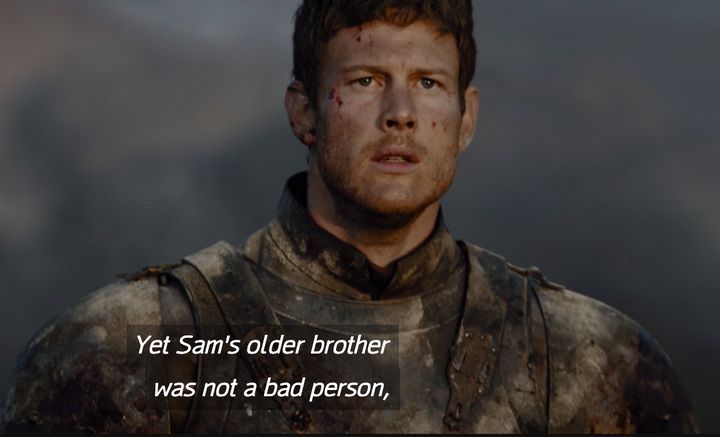
In the “Inside the Episode” for the Season 8 premiere, the showrunners made a slight mistake when explaining why Sam (John Bradley) was upset about the death of his “older” brother. Here’s the thing: Sam didn’t have an older brother ― it was actually Sam’s younger brother, Dickon (Tom Hopper), who died. The whole reason Sam was forced to go to the Wall in the first place was so his younger brother could be heir to House Tarly. As the older brother, Sam was first in line.
Contradictory statements stand out even more.
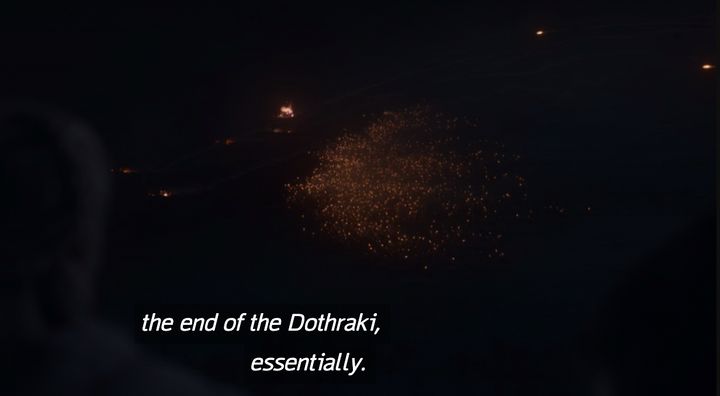
In Episode 3′s “Inside the Episode,” the showrunners said that the Dothraki were “essentially” destroyed by the army of the dead. Well, The Golden Company must’ve watched that interview because they were more shocked than anyone when the Dothraki, still very much alive, charged at them during the Battle of King’s Landing.
Some moments become less memorable and more meme-orable.
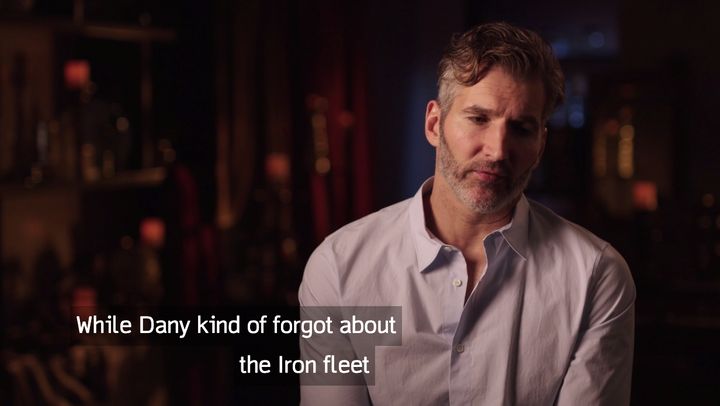
Perhaps the most glaring example came when the showrunners explain that Daenerys got ambushed by Euron Greyjoy (Pilou Asbaek) and his ships in Episode 4, “The Last of the Starks.” Despite all the examples of Euron’s forces destroying Dany’s army over and over again (defeating her Dornish allies, getting the jump on her at Casterly Rock), Benioff said the Mother of Dragons “kind of forgot” about the Iron Fleet. And the memes spread like wildfire:
As you could see in “The Last Watch,” the final season of “Game of Thrones” was an unprecedented spectacle, involving countless crew members going above and beyond to bring it to life. Regardless, with viral fan petitions and the lowest ratings of any season of the show, it’s also undoubtedly been the most controversial run to date.
If you’re wondering exactly where things went wrong story-wise, you don’t have to look too far. The show does a pretty good job of explaining things itself.
REAL LIFE. REAL NEWS. REAL VOICES.
Help us tell more of the stories that matter from voices that too often remain unheard.



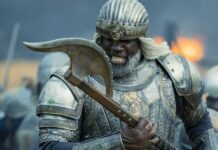
















![[Book Review] The Blade Itself (The First Law Trilogy) by Joe Abercrombie](https://bendthekneegot.com/wp-content/uploads/2018/01/1516047103_maxresdefault-218x150.jpg)








